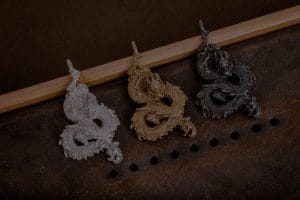**Abstract:** Unravel the truth behind common misconceptions in Feng Shui. This guide debunks prevalent myths and provides practical insights for harnessing energy in your space.
Understanding Feng Shui: Beyond the Myths
Feng Shui, the ancient Chinese practice of arranging your environment to enhance energy flow, is often misunderstood in Western cultures. Many people associate Feng Shui with superstitions or outdated beliefs. However, at its core, Feng Shui is about creating harmony in your surroundings to promote well-being and balance. To truly benefit from Feng Shui, it’s essential to distinguish fact from fiction.
Myth 1: Feng Shui is Only About Furniture Placement
One of the most pervasive myths is that Feng Shui is solely about how furniture is arranged. While furniture placement is crucial, Feng Shui encompasses much more. It involves understanding the flow of energy, or “Chi,” and how different elements interact within your space. Effective Feng Shui considers colors, shapes, materials, and even the direction your home faces. By looking beyond furniture, you can create a more holistic environment that nurtures your spirit.
Myth 2: Feng Shui is Superstitious Nonsense
Many dismiss Feng Shui as mere superstition, equating it with luck charms or rituals. However, Feng Shui is rooted in a deep understanding of energy dynamics and human psychology. It draws on principles of balance, such as Yin and Yang, and the Five Elements theory, which emphasizes the interconnectedness of nature and human life. By implementing Feng Shui principles, you can improve your mental clarity, emotional stability, and overall quality of life, proving its practical value.
Myth 3: You Need Expensive Items for Effective Feng Shui
Another misconception is that achieving good Feng Shui requires expensive décor or rare artifacts. In reality, Feng Shui can be practiced with simple, everyday items. It’s about intention and awareness rather than material wealth. For instance, decluttering your space, using natural light, and incorporating plants can significantly enhance the energy flow without breaking the bank. Simple changes can lead to profound improvements in your environment.
Myth 4: Feng Shui is Only for Homes
Many believe Feng Shui is only applicable to residential spaces. However, its principles can be applied in offices, gardens, and even public spaces. In the workplace, for instance, a well-organized desk can boost productivity and creativity. Similarly, Feng Shui can enhance the ambiance of restaurants or retail spaces, leading to improved customer experiences. By understanding that Feng Shui transcends residential boundaries, you can create positive environments everywhere.
Practical Applications of Feng Shui
To implement Feng Shui effectively, start by assessing your space. Identify areas that feel stagnant or chaotic and consider how you can improve the energy flow. For example, ensure that pathways are clear, allowing Chi to circulate freely. Incorporate elements that resonate with you, such as colors or symbols that reflect your aspirations. Remember, Feng Shui is not a one-size-fits-all approach; personalize it to suit your unique needs and preferences.
Conclusion: Embracing the True Essence of Feng Shui
By debunking these common myths, we can embrace the true essence of Feng Shui. It’s not merely a decorative trend but a powerful tool for enhancing our lives. With a deeper understanding of Feng Shui principles, you can transform your environment into a sanctuary that supports your physical, mental, and emotional well-being. Take the time to explore these concepts, and you may find that the harmony you seek is just a few mindful adjustments away.










